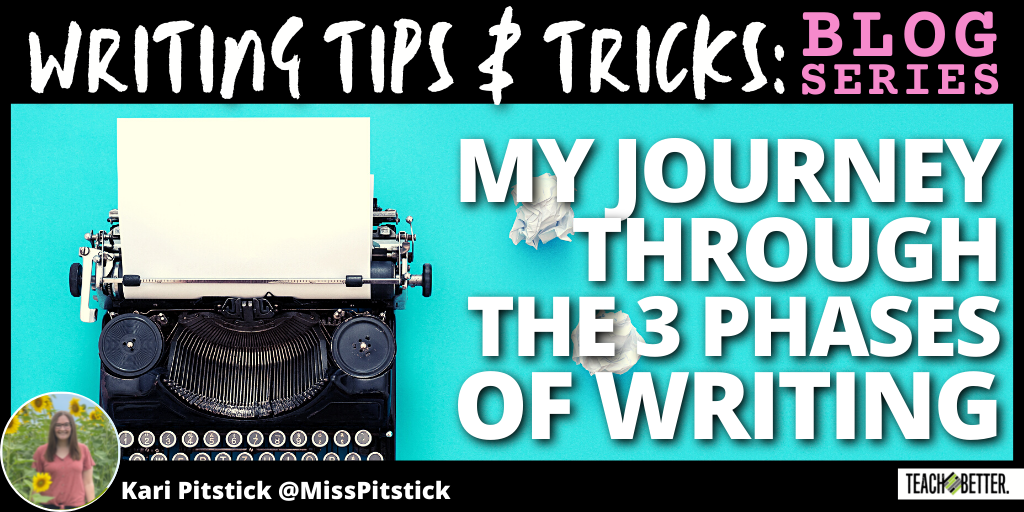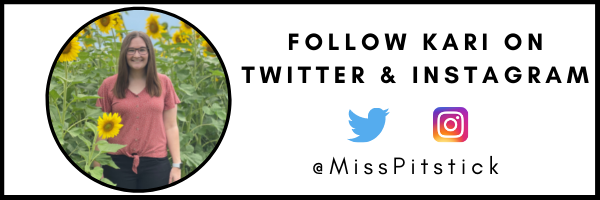TL;DR:
- Become a connected educator by writing and sharing your voice with others.
- When you are writing for an audience, first decide on the focus of your piece.
- Be as authentic as possible as you share your experiences.
- Don’t forget to share your published work on social media to continue connecting with other educators from around the world!
As of April 2020, I didn’t write much. At least not about teaching unless it was for a paper for a grad class. No one would care what I had to say—no one would care about my opinions or experiences.
At least that’s what I thought.
But after becoming connected with the Teach Better Team, I realized I had a place where I could share my voice with an authentic audience, one who actually would care what I’d have to say. I do need to give a special shoutout to Katelynn Giordano, who encouraged me to start blogging.
Phases of Writing: The Before
Sometimes when I write now, I just write to get my ideas and thoughts out there on a paper (or a document). However, more and more, I’ve been writing with the intention of sharing my ideas with others.
When I know I want to share my writing, I first decide what I want the focus of my writing to be so that what I say is automatically more organized and purposeful. As a teacher, I have thousands of education-related thoughts floating around in my mind on any given day, so I decide on the focus first.
Blogging, or writing in general, is a great time to forget the highlight reel. Keep it real. Click To TweetPhases of Writing: The During
As I write, I try to make what I’m saying be as authentic as possible. If I’m going to share strategies that have helped my students become more engaged with reading, I want to make it clear that I still have students who have left my classroom disliking reading. I want to share the good, the bad, and the ugly so I can connect with my audience in the most authentic way.
It goes a long way when you are willing to be vulnerable and share your mistakes and failures. If you don’t feel comfortable doing that, that’s ok. But…just know that there’s always someone out there who will connect with what you’re saying.
Blogging—writing in general—is a great time to forget the highlight reel. Keep it real.
[scroll down to keep reading]
Phases of Writing: The After
When I’m ready to share my work, I read over what I’ve said a few times to make sure I’ve shared everything I want to share and that my message makes sense. I even have a trusted colleague give me feedback, and I choose someone who I know will point out what I could do better (shoutout Livia Chan for always reading my work and providing me with honest feedback along the way).
I share my writing on social media and encourage others to share their thoughts with me. Do they disagree with anything I’ve said? Do they have something they’d like to add to my views?
Asking for this engagement has helped broaden my perspective and also make connections with those who resonated with my writing.
The next time you are deciding whether to share something…just go for it. And if you choose the Teach Better Blog as your platform to share your voice, know you have the team’s support along the way!
Connect with me on Twitter or Instagram @MissPitstick, or email me kari@teachbetter.com if you’d like to chat about blogging with the Teach Better Team!
See the full “Writing Tips & Tricks” blog series here!
About Kari Pitstick
Kari Pitstick is a 7th grade English Language Arts teacher and track & field coach in Illinois. She’s also the Director of Digital Content for the Teach Better Team. She graduated from Illinois State University in 2015 with a bachelor’s in Middle Level Education, and American College of Education in 2018 with a master’s in Curriculum & Instruction.
She knew she wanted to teach at the middle level since she was in middle school herself. One of her main missions is to provide a safe and friendly environment for students to explore their passions as learners and as people.
Kari is an avid reader, spending most of her free time reading and writing, and she hopes to share that passion with all those around her—students and adults, alike!



